Cats are well known for constantly keeping up with their daily routine of grooming their face and paws. However, there are other areas they can not reach that require a tidy cleaning as well. Unfortunately, while most people recognize a dog’s need to be groomed, often the cat is overlooked.
There are many important reasons for grooming your cat. Brushing your cat is a prime opportunity to check for fleas and ticks. A regular grooming can also be an essential asset for catching thus problem before it becomes an all out infestation. Another reason to brush and comb your cat is that this process helps remove dirt and debris he may not have been able to reach himself. There are many irritants and other items you don’t want resting on your cat’s skin as well as other debris you would not want him to ingest.
The last reason grooming is such an essential part of your cats care, is that it removes loose hairs from his coat. These loose hairs can end up inside a cat’s stomach and are not always easily digested. Hair that is not digested becomes what is known as a Hairball. On occasion, your cat may be able to cough it up, but more often, these matted, mucus hairballs become lodged in the intestinal tract, creating very serious problems.
Contrary to what most people might think, cats actually enjoy being groomed. To make this process easier, introducing your cat when he is a kitten to brushes and combs will make the experience much more comfortable for you and your cat.
To brush your cat properly, start by gently running the brush or comb through your cat’s fur following the grain. Always start with the back of the neck and work your way down to the tail. If you are first starting with a kitten, and he starts to become irritated, stop brushing. Use a soothing, calming voice as you play and pet him. This will help get the kitten back into a more agreeable and relaxed state to continue the grooming process. Always remember, never to use a comb or a brush near the cats face or eyes. They do not like this and it can prevent them from being comfortable the next time you try brushing him.
In an instance where a cat does not enjoy being brushed with a brush or comb, there is another alternative. A useful tool called a grooming glove is a great way to make your cat think he is only receiving a relaxing and luxurious massage, when in fact this glove is gently removing loose hair, dirt and debris from his coat. You may also find that cats do not mind having their faces groomed with the gentle glove as well. However, some cats still won’t allow you to groom their paws.
Another important part of the grooming process, besides brushing is examining your cat’s eyes and ears. The eyes should be clear and free of debris. If debris is found in the corners, a damp, warm, soft cloth can gently remove it. The ears should be clean and reflect a pink healthy hue. If you find that your cat’s ears contain, blackish colored dirt, this may be a sign of ear mites. These mites can cause the ears to be tender and over time will begin to shrivel the ears causing your cat to lose his hearing. If you believe your cat has ear mites, it is best to visit a veterinarian. He can prescribe medicine that should clear it up if caught in time.
The next step in giving your cat a healthy grooming is to check his claws if they have not been removed. A pair of special pet nail clippers will help you remove the long curved tip, although be careful not to cut to far back and nick the quick. This is the part of the nail that contains blood vessels and when cut, will bleed and be very painful for your cat. Trimming your cat’s nails will not only prevent them from catching on things and potentially breaking off, but it will also protect you and your possessions from scratch damage.
Teeth are another very important thing to remember when grooming your cat. As cats age, they are highly prone to dental problems which can cause severe illness. A fingertip toothbrush and some specially flavored pet toothpaste worked gently over your cat’s teeth, once a week is essential in preventing any future dental problems.
Lastly, you should try to implement a grooming schedule for your cat once a week. Anyone who owns a long haired cat may want to brush him twice a week as they are prone to becoming matted. If matting and gnarled hair has occurred, the best answer is to have your cat shaved. This must be done in a veterinarian’s office as cats do not like the sound of the clippers and must be put under sedation. This can be a truly traumatic experience for your cat, so a regular grooming routine at home will keep your cat happy and healthy while also keeping his coat clean, smooth and tangle free.
There are many cat loving people who are under the impression that cats are un-trainable creatures. The belief is that a cat is too moody and snobbish to adhere to the commands of its owners. However, often times, cats do not comply with their owner’s request simply because they do not understand what is being asked of them.
While training a dog is somewhat difficult and time consuming, training a cat takes a much more calm, relaxed, patient and devoted individual. When training a dog, negative reinforcement is usually adhered to for disobedience; however, a cat will not respond to training that is reinforced with anything other than positive reinforcement.
Large amounts of praise when your cat has complied with the task that has been requested will ensure your feline grasps a better understanding of what is expected. Typically, you should start training your cat when it is about eight to ten weeks of age, although an older cat is still quite capable and willing to learn a few new tricks.
When you start training your cat, it is important to decide on a quiet place to practice. Noise and confusion will only distract him from what is trying to be accomplished. Another essential tool to have when training your cat, is an endless supply of his favorite cat treats to be used in implementing positive reinforcement.
As with training a puppy or dog, it is important to work on only one command at a time. Introducing several different commands at once will only lead to frustration and anger. The best command to start training your cat with is by fat the easiest and that is, to come when he is called. All commands, no matter what the situation, should be kept short and to the point. For teaching your cat to come when he is called, a simple “Here Kitty” or “Come Kitty” works best.
In order to effectively teach your cat his first command, you must first get down on his level. Sitting or kneeling on the floor, call out the command that you have chosen to call him to you. If your cat responds, give him plenty of praise and show an immense amount of excitement, followed by his favorite treat.
After the first try, wait for your kitten to travel away from you. Then, move to another area of the room and call him again. If your cat responds, repeat the same praise and treat routine you enlisted previously. It is important to note, not to work on training your cat for more than ten minutes at a time. If you notice that your cat is acting bored or frustrated, it is now time to stop.
Trying to train your cat when he is not truly interested will only upset you and your cat. In order for the trick or command to be learned, training should be done two to three times a day for one week. If after that time, your cat has successfully learned the command; it is now permittable to start teaching him a new command.
Cat Crate and Leash Training
Crate training and harness and leash training are very important things that must be taught to your cat for his own safety and well being. Traveling for long distances or a trip to the veterinarian can become quite frustrating if your cat is upset by being attached to a leash or confined in a small crate.
In order to teach your kitten to use a leash and a harness, it is important to introduce them both gradually. First, start by placing the harness on him, making sure it is not too tight.
Allow him to walk around the house with it on for about twenty minutes or so. Repeat this one or two times a day for about a weak. Once your cat is used to wearing the harness, it is now time to introduce the leash. The best way to do this, is to attach the leash to the harness, but do not pull on it. Only allow your cat to drag it around while maneuvers through the home, but be careful to watch and be sure it does not get caught up on anything that could potentially become harmful or dangerous.
When your cat is used to dragging around the leash, gently pick it up, showing him it is okay for you to have it. Be sure to speak in a calm and soothing voice. Then, as you call your cat, give the leash a gentle tightening. You can use treats to coax your cat into following you around and this should help enlist the positive reinforcement.
Crate training is a bit easier. It is important that you have a cozy blanket and your kitten’s favorite toy inside. As you place your kitten inside the crate, praise him. After only about two to three minutes, let your kitten out, but when doing so, do not make an excited or lavish gesture about it. Performing this several times over while extending the length of time gradually will eventually have your kitten feeling quite comfortable in his private crate hideaway for about an hour or two.
Every pet in some form or another is able to perform a daily routine of bathing on its own. But, as most mischievous pets do, they can get extremely dirty when their curiosity gets the better of them. Dogs are, for the most part quite easy to bathe as most of them do enjoy the water.
However, the old wives tale is true regarding cats, they HATE the water. Baths are good for a number of reasons from cleaning off dirt, chemicals, grease or even for flea infestation. Dogs and cats have highly sensitive skin and some even have hair that is fragile and prone to damage, so experts recommend giving them a bath no more than once a month.
Just as we require special items in order to bathe, so do dogs and cats. But, before you begin to gather these items, there is something you must decide first. Where are you going to give your cat his bath?
We have all seen pictures of the little boy or girl giving their dog a bath outside in an old metal tub while using a garden hose. While this method may be great for those hot summer days, cats are smaller and require a little more finesse.
There are two prime locations that work great for bathing your feline companion. The first is the kitchen sink. This area is much smaller and may provide a more comfortable area that will allow you to retain a better grasp on your cat and most kitchen sinks are already equipped with a sprayer. However, the kitchen is a much larger room and if your cat escapes your hold, it has plenty of areas to run for cover.
The second option is the bath tub. A bathroom leaves you the ability to contain your cat in a small area in case of an escape attempt. For safety reasons, along with making your cat feel safe, it is recommended that a non-skid mat be placed securely at the bottom of the tub or sink. This prevents your cat from sliding all over the place and gives them a more secure feeling.
Now, it is time to gather the items needed in order to give your cat a clean healthy body. The first on the list is pet friendly shampoo and conditioner. Human shampoos and conditioners contain harsh chemicals that may irritate the eyes or skin of your cat. Next, you will need two absorbent soft terry towels, a sprayer, cup or pitcher for rinsing purposes and some experts say playing soft soothing music in the background can help calm your cat during bath time as well, although this is optional.
After you have placed all the items in the designated area and have secured the skid free mat to the bottom of the tub or sink, add only about two to three inches of warm water. You can use the elbow trick like testing water for a baby’s bath to make sure it is warm and not to hot. Now it is time to turn on the charm, turn on the music and finesse your cat.
As you pick up your cat and begin to place him in the water, pet him gently and begin speaking to him in a soothing, reassuring voice. Usually, within a few minutes, the cat will begin to relax and not struggle as much. Using the sprayer or if this method startles your cat into a panic, you can use a cup or pitcher to slowly pour water over his body, making sure to stay away from his head and face, all the while, continuing to speak in a low reassuring voice.
When wetting the cat down is complete, place a small amount of shampoo, about the size of a dime into the palm of your hand. Start rubbing the shampoo gently into the hair and skin, slowly working it into lather, once again, being very careful not to get near the head or face. When you are finished lathering the soap, using a sprayer, or cup which ever does not frighten your cat, slowly begin to pour clean fresh water over his body.
Make sure all soap is rinsed thoroughly from the body as it can cause skin irritation. If your cat is willing, you can now begin to lather a dime sized portion of conditioner into his hair. This step is not required. Once again, rinse your cat thoroughly making sure not to leave behind any residue. After the body is finished, get a small sponge or soft wash cloth damp with warm fresh, soap free water and begin to gently wipe off his head and face. Please remember to be very careful around the eye area.
The final step in the cat bathing process is to pat your cat down with one of the terry cloth towels. When that towel is wet, grab the second one and begin the process again. As the final towel begins to become damp, a short haired cat can usually take over and finish the job itself.
If you own a longhaired cat, it may be beneficial to see how it will react to the sound and wind of a hair dryer. It is important to remember though, to use the lowest setting. Another very important point to remember is to always keep the hair dryer in motion making sure not to get too close to the body in order to prevent the possibility of burning the skin.
Now that you have a new kitten in your family, there are many things you must consider in order to ensure he is happy and healthy. Food is just one of the important decisions you must make. Picking up any old bag of cat food is not the best choice for the health of your kitten. He is growing at a rapid pace and requires essential nutrients to help him be healthy and stay strong.
Kittens receive all of their nutrients from their mother’s milk for the first few weeks of life. Once they have reached about four weeks of age, the breeder most assuredly, started supplementing his feeding with a moist kitten food or dry food that is moistened with a little water.
When the kitten reaches eight weeks of age, he will be completely weaned from his mother’s milk and be on a full diet of kitten food. A good breeder will give you a sample of the brand they are using or at least tell you the name of the brand. If you wish to change your kitten’s current brand of food, it is very important to incorporate some of the old food with the new. This allows your kitten time to adjust to the change gradually without upsetting his digestive system.
Just as human babies do, young kittens require several meals a day in order to get the essential nutrients they need to grow strong and healthy. Typically, it is best to provide your kitten with four small meals a day up until he is six months old. At this time, his rate of growth decreases dramatically as well as his amount of energy and activity. This requires a decrease in meals to two or three a day.
Another important consideration to remember is that this time does not mean he is an adult cat and can eat adult cat food; he is still a growing kitten, just not as rapidly. Water is an absolute necessity and should be offered to your kitten in unlimited quantities.
After reaching the adult age of one year old, your kitten can now be gradually converted to adult cat food. Cats for the most part will eat whenever they are hungry; however, leaving a full bowl of food available at all times can lead to over eating and obesity, so a routine of feeding twice a day is usually sufficient along with the unlimited water.
Cats that are fussy and refuse to eat dry cat food can be given moist canned food. Although, it is imperative to remember not to leave open cans sitting out or left over food in a bowl for long periods of time. Once a can is opened it is recommended that it be kept in the refrigerator.
All cats require different needs based on any special ailments he may possess. Today’s pet food market offers a wide variety of food from weight control, urinary tract health, hairball and special diabetic foods as well. Check with your veterinarian for a better understanding as to which food offers the right nutrients for your furry companion.
While soft food may be a preference, dry cat food is also highly effective in the fight against tartar. A yearly trip to your veterinarian can ensure that your cat’s teeth are healthy and free of tartar build up and tooth decay.
Taking care of your fuzzy pal can be quite easy if you are well aware of what exactly needs to be done when it comes to their regular maintenance and grooming. Being a cat owner involves a lot of responsibility and important decision-making.
Your Cat Care involves important aspects like health and medical check-ups, grooming and training with the main goal of keeping your cat happy at the end of the day.
Simple tips to follow:
A happy and healthy cat is what every cat owner wants. So there are a few little things that you must keep in mind to avoid any complications.
Good health is the key to good cat care:
A regular visit to the vet is an absolute must. This will help you know the early signs of illness, if any. Besides the regular ones, an annual visit is important especially if the cat is aging. Detecting any subtle changes early will be crucial in determining the health of the cat and thus can give better treatment. Regular checkup of abdomen, skin or coat, eyes and ears is essential to make sure that your pet is in good health.
Grooming:
Brushing with proper brushes will significantly reduce the amount of flea infestation on your feline friend, which constitutes an important part of cat care. Trimming the claws is necessary and a nice way to protect your furniture, however, you need to be extremely careful while clipping or trimming the claws as it might cut the veins. It is advisable to go for a vet’s help if you are not familiar with the procedure of clipping the claws.
Providing a fresh litter box:
This is an important part of cat care, where you must provide your cat with a litter box for him to use it every time. It is equally essential to clean the litter box at least twice a day. Thorough weekly scrubbing and disinfecting is a must to keep infections at bay.
Training your cat is an important part of the cat care to be able to make them well behaved at home; however, it should never be done in a harsh manner as that will lead to behavioral issues. A firm approach with lots of love is the trick to a disciplined cat. Cat care is not difficult but will need a lot of patience. Generally cats are quick learners so you will not have much problem in training them. Try and often reward your cat with pats and treats to speed up the learning process.
Knowing some simple but effective Cat Care Tips will solve a lot of your problem. Caring for your cat is definitely challenging but of course fun and rewarding. As a cat owner, it is your sole responsibility to look after him and ensure his well being. You have to be aware of important aspects of grooming and training along with required medical checkups.
Some handy tips
Grooming: Effective cat care tips always stresses on proper grooming. Whether your feline friend is long haired or short haired, it needs to be brushed regularly- more so in case of long hair. Brushing with the appropriate brushes will prevent hairballs problem and also flea infestation. Their claws also need to be trimmed but it is better to seek professional help as you may end up in cutting through the vein.
Litter Box - This is extremely important if you are looking for a well behaved cat. Proper maintenance of the litter box will ensure that the cat uses it regularly. Providing a clean box with a fresh litter is the first step to developing litter box habit. Disinfecting the litter box and making sure it smells good is another cat care tips that will come very handy.
Toys: Toys are excellent ways to show that you care for you feline, more so for the kitten. Toys will make them feel safe and warm and you will soon find them cuddled up with the toy.
Scratch Post: Good Cat care tips will involve investing in a reasonable sized scratch post. It will help your cat to sharpen out his claws and will protect your expensive furniture.
Medical Checkup - Medical checkups are absolute essential as you are solely responsible for the health of your pet. Always remember that a healthy cat is a happy cat. An annual checkup is mandatory for any cat. But if your cat is more than 7 years, then checkup once every 6 months is an absolute must. This will help in detecting early negative signs of health.
It is very important to monitor your cat closely to bring about the desired behavioral changes. But whatever you do make sure that you do it with lots of love and affection. Training up a cat is extremely easy and much fun if you know the little Cat care tips.
Using A Step by Step Guide To Give Your Cat The Best Care
You can always take help from the step-by-step guides that are extremely useful. From medical guidance to the best litter box advice, from the food habits to the behavioral issue, you will get all the help that you are looking for through the step by step guide.
|
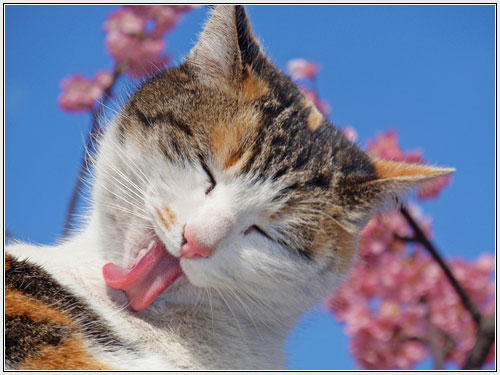
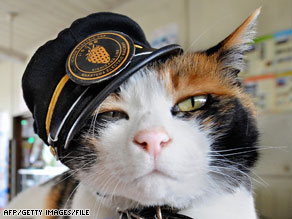
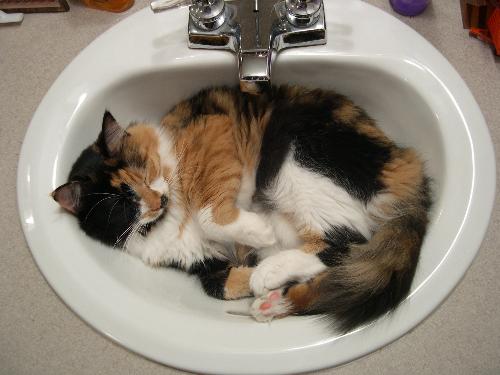
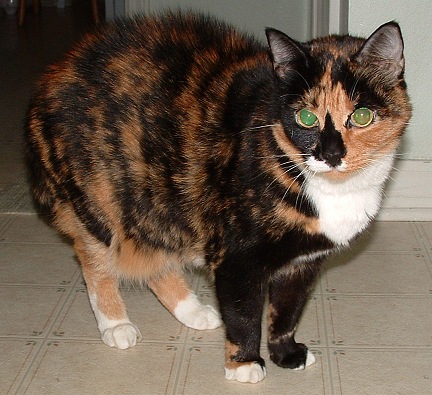
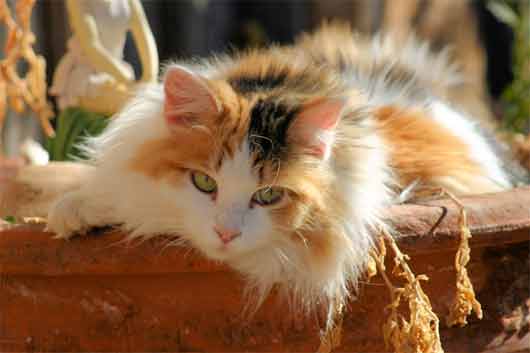

 RSS Feed
RSS Feed